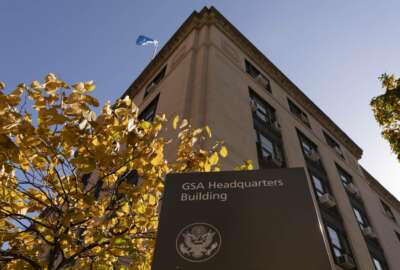

The fourth report in a year about the Transactional Data Reporting pilot continues to ring the same negative notes from the inspector general while GSA official...
The General Services Administration’s inspector general just released at least its sixth report on the Transactional Data Reporting (TDR) program since 2015.
The IG, once again, took the program to task for deficiencies that “clearly demonstrate that the TDR pilot has not been a success and point to significant problems that must be corrected before its expansion across the MAS program.”
The response from the Federal Acquisition Service, like many times over the past almost eight years, indignant, frustrated and unwavering. GSA seems less and less bothered by the IG’s criticisms and more committed than ever to continue to evolve TDR.
It’s clear both parties are dug into their positions and are at a stalemate of sorts. The IG released three reports in calendar year 2022 where TDR was a major focus areas in some way, shape or form. GSA continues its plan to expand TDR to other parts of the schedules program and improve the data quality of the efforts.
So the question becomes when you have two immovable forces, is there a way they can find common ground around how to ensure the schedules program is providing the best prices to agency customers?
GSA launched TDR in 2016 to find a way to move away from the use of the price reduction clause (PRC) and commercial services practices, which vendors hate and agencies find less and less valuable.
“…GSA is adopting a more dynamic market driven pricing model, where vendors submit prices paid by government customers through a new Transactional Data Reporting clause and the government uses this data, along with other pricing information, to ensure a vendor’s offered price is competitive relative to other vendors selling the same or similar items or services,” GSA wrote back in the 2016 final rule.
Roger Waldron, the president of the Coalition for Government Procurement, summed up the problem TDR is trying to solve much more succinctly.
“It is time for GSA to finally move away from the current CSP and PRC, which are the pillars of an outdated 1980s multiple awards schedule pricing policy that increases costs, creates barriers to entry and limits competition both in the federal and commercial markets,” Waldron said in an email to Federal News Network. “Transactional Data Reporting is the next logical step in the continuing evolution of the FSS program. It focuses GSA on relevant, market-driven transactional data that will support category management.”
GSA, the IG and industry agree TDR is far from perfect.
The IG’s findings in this latest report mirror many of the same concerns auditors raised previously. The data is unreliable.
“We found that the data reported for $12.6 billion of these sales (87 percent) cannot be used for meaningful price analysis,” the IG stated. “This data is unusable because it lacks essential information, such as standardized part numbers or descriptions that identify the services provided.”
The IG also doesn’t agree with GSA’s own TDR evaluation, calling the agency’s 2020 findings “misleading” and having “significant deficiencies” with the evaluation of the metrics.
The IG concluded, once again, GSA should end the TDR pilot through an exit strategy or take “significant actions” to fix the problems.
Industry and government sources say GSA and vendors are too invested in the program and can’t easily pull the plug.
The fact is GSA will not, and really can’t, end the TDR pilot. GSA would have to renegotiate commercial service prices with every contractor who is in the TDR pilot. That time and cost would be too high, and it’s assuming companies would want to go through these renegotiations. Sources said it’s likely a lot of these companies wouldn’t stay on schedule further exacerbating federal industrial base challenges.
GSA said it continues to improve TDR. It said in the response to the IG that the data quality is getting better. Since 2019, the data quality for products when compared to GSA Advantaged improved to 83.3% from 43.4%.
Jeff Koses, the senior procurement executive at GSA, said on last Tuesday at the Coalition’s spring conference that the data quality improvements extend beyond just comparing prices, but also to data usage, workforce training and sales matching.
“If we go back to the beginning, we said that there were four goals that we thought we could accomplish through transactional data reporting. First, lowering prices. I’d say that we have seen a ton of evidence over the last several years, and every time we’ve looked at it, we’ve seen that the prices for prime contractor who use TDR data their market position on it is better than the prices of the contractors where we are using the old regulatory compliance controls. Second, lowering the reporting burden. This is an area where we have spotted an opportunity to reduce regulatory burden, and we’ve seen where contractors have the choice of moving over to TDR compliance,” Koses said. “Third was supporting small business. The data demonstrates that the contractors who are submitting TDR data are using the data for understanding of their market position are more successful, are having a higher sales growth, than under the traditional program. And finally, our fourth objective was getting better at using market intelligence to drive better acquisition outcomes. My office did an evaluation almost three years ago, we said there needs to be improvement to get space. The series of IG reports amounts to there needs to be an improvement in that space, particularly contracting officer usage, and we all agree on that. It’s been continued progress, more benefits are emerging from TDR.”
The other piece that the IG doesn’t seem to consider is TDR’s own evolution. Just because GSA set out a series of goals in 2015, it doesn’t mean eight years later those goals are the same.
Larry Allen, president of Allen Federal Business Partners, who was against TDR initially but has come around to see its benefits, said the IG doesn’t seem to understand the goal of the pilot.
“The IG seems to believe that TDR data was being collected primarily for use as a negotiation tool. It was not. TDR data was originally supposed to be used to allow federal agencies to make good buying decisions AFTER a schedule contract had been awarded,” Allen said. “The whole purpose of the TDR program was to get away from contractor-supplied pricing information to determine the price reasonableness of a schedule item. Contracting officers were, and are, supposed to use market research as their primary means of determining price reasonableness. I repeat: TDR data was to be used for price comparisons AFTER award, not to determine price reasonableness during negotiations. Why have a TDR program that relied on contractor-supplied pricing information? That’s the traditional route for getting a schedule.”
Waldron added TDR also is trying to address the long-standing belief that price only really matters at the task order level when quantity discounts and other factors come into play.
“Under today’s multiple award schedule program, price and value fundamentally are driven by competition for agency specific requirements at the order level. TDR recognizes that reality by collecting data that will assist all agencies in better managing requirements and achieving best value results utilizing the program,” he said.
Of course underlying all of this is the fact the IG benefits greatly from the PRC/CSP approach.
Multiple government and former GSA sources confirmed that the IG has financial reasons not to move away from the current approaches. Sources said the IG justifies its personnel count as well as funding by doing these investigations into potential PRC/CSP violations.
By moving fully to TDR, GSA’s IG potentially would have a smaller need to review price reasonableness and perform similar audits, and therefore would need a smaller budget.
The more the IG documents the savings it has delivered in excess of its budget, the more inclined Congress is to support budget increase. GSA’s IG said it “saved” more than $282 million in 2022 through pre-award audits of the schedules program. The issue, of course, is these are pre-award audits so GSA never spent the money in the first place, so the savings are theoretical. It also assumes GSA agrees with the IGs recommendations and they were timely.
If GSA goes all in on with TDR, sources say the need for pre or post award audits is all but eliminated. So the question becomes how does the IG deliver value with respect to oversight of the schedule contract?
The IG tells Congress for every dollar lawmakers allocate, their office provide $20 in savings. That metric, sources say, would be severely impacted.
The IG’s budget request for 2024 is $78.6 million, up from $74.5 million in 2023 and up $10 million since 2020.
At the same time, let’s be clear, the IG’s budget isn’t necessarily driving their oversight of TDR as the problems they are finding are real. It’s more about the unwillingness to find a compromise that would work for all parties involved.
The IG’s recommendations are either to terminate the pilot or for GSA to take six steps, including conducting a comprehensive assessment of all TDR data; verifying the accuracy and completeness of all TDR data and implementing a verification process to ensure that TDR data is accurate and complete when it is submitted by contractors.
Mark Lee, the assistant commissioner of the Office of Policy and Compliance in GSA’s Federal Acquisition Service, said among the steps GSA is taking are completing the verification and validation of TDR data.
“Between our FAS sales reporting portal and the FAS Common Catalog Platform, we’re continuing to do a comprehensive review of all TDR data,” Lee said at the Coalition’s event. “We’re continuing to monitor compliance with TDR reporting requirements from our contracting officers and our industrial operation analysts. We’re updating our 4P report along with our compliance and pricing report to make sure that our CO’s are utilizing the TDR data.”
Koses added the IG is correct to say TDR needs to be improved, but just because it’s not as good as it could be, it needs to be terminated.
Industry experts echoed Koses and GSA’s feelings about TDR.
“While industry may believe that this system has its flaws, the agency has nevertheless moved ahead at the program level to develop price analysis capabilities that they were supposed to develop to negotiate TDR contracts. The pricing tool is also used today for contract mods. I do not see where the IG commented on this fact, though it is a significant part of today’s schedule program,” Allen said. “TDR data can be used as a market research tool to determine whether pricing submitted by new offerors for items that are the same or similar to items already on schedule is fair and reasonable. Again, though, GSA has already developed a pricing tool that seems to accomplish this task. TDR could be an additional resource, but, as the IG report adeptly points out, that information may not be useable. It was, however, NEVER MEANT to be useable as a primary way to determine Schedule price reasonableness. The whole point of the TDR pilot was to get away from contractor-supplied data and allow contracting officers to conduct market research.”
It seems like time to lock GSA leadership and the IG in a room together with pizza, coffee and whatever else they like and not let them out until they find a way forward. Otherwise, the current disconnect will continue to squander precious time and resources for both sides of the TDR debate.
Copyright © 2024 Federal News Network. All rights reserved. This website is not intended for users located within the European Economic Area.
Jason Miller is executive editor of Federal News Network and directs news coverage on the people, policy and programs of the federal government.
Follow @jmillerWFED



